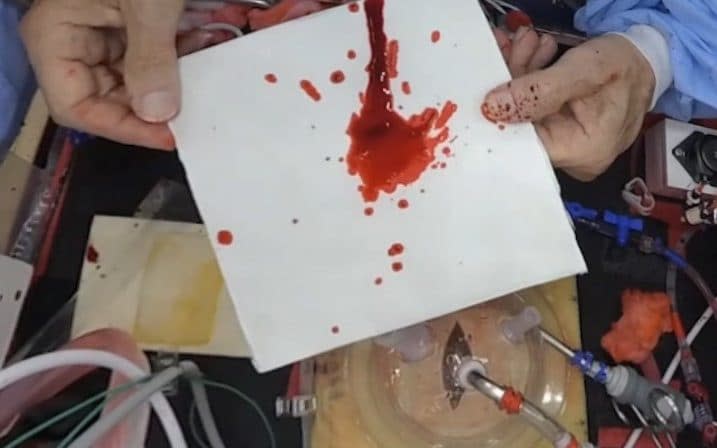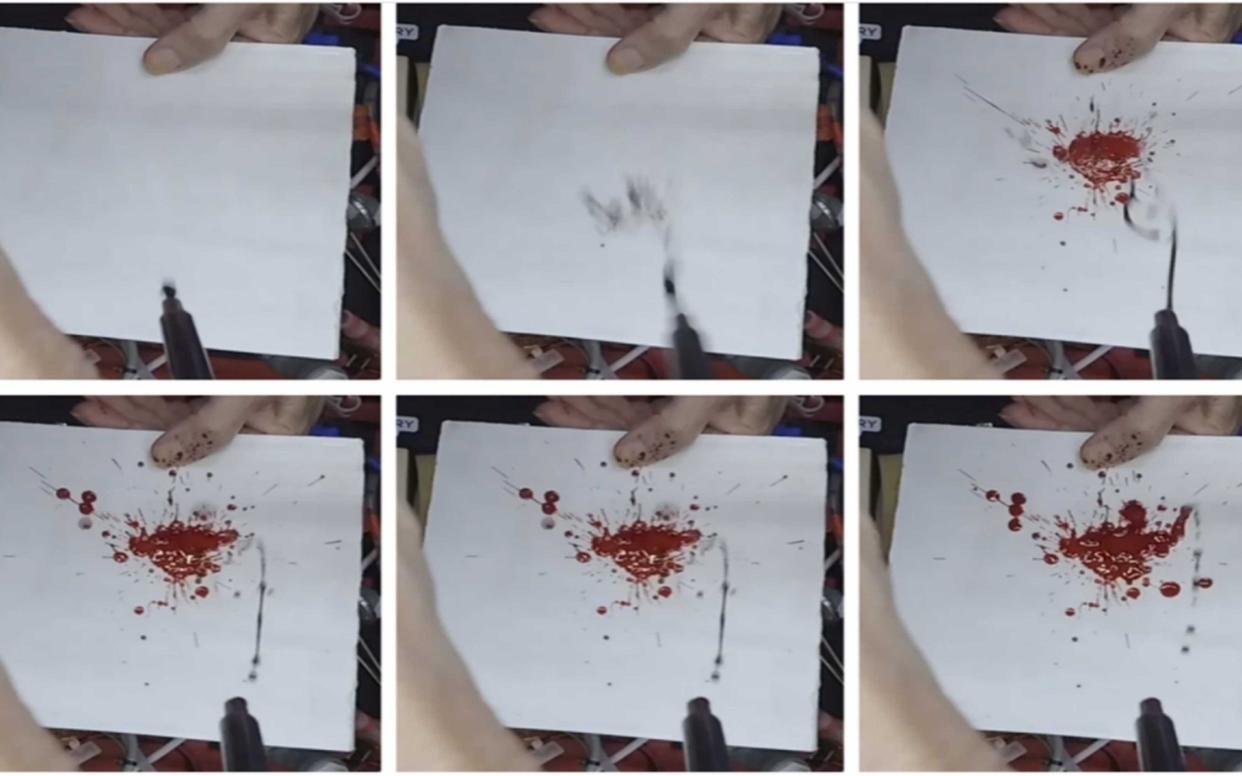Scientists prepare for murder in space with microgravity blood spatter tests

In space, no one can hear you scream.
But experts may soon be able to tell what caused the screaming, after carrying out the first blood spatter tests in microgravity, in anticipation of violent crimes and accidents that may occur off-Earth.
With more people travelling into space, and plans for imminent colonies on the Moon and Mars, a new field of “astroforensics” is needed to aid future investigations.
Self-confessed “space nerd” Zack Kowalske, a crime scene investigator based in Atlanta, Georgia, who became curious about how blood spatters might be impacted by changes in gravity, led the study as part of his doctoral research at Staffordshire University.
“As off-world travel becomes more public and mainstream, perhaps in the next century, then I definitely believe we will see human-based conflict and violent crime,” he said.
“Violent crime is as old as our species, dating from cavemen hitting each other with rocks over food to today’s much more sophisticated means of violence. Where humanity goes so too does violence, not trying to be pessimistic.”
Working alongside the University of Hull, the team concocted fake blood made of 40 per cent glycerin and 60 per cent food colouring, which mimics the density and viscosity of human blood.
They then took the liquid on board a Boeing 727 parabolic flight – nicknamed the “Vomit Comet” – to mimic microgravity and shot it through a hydraulic syringe at paper targets.
Bloodstain patterns provide valuable information about a crime or accident, giving information about the relative position of the victim and assailant, as well as weapons and methods of attack.
When projected through normal gravity, large drops of blood break up into smaller drops, which are spherical.
However, the team found that in microgravity, the separation of blood was not as clear, so the blood would cluster together or be linked in more blob-like formations.
The team said that in space, blood spatter patterns would likely be larger and more irregular than on Earth.
‘Incidents may well occur’
Co-author Prof Graham Williams, from the University of Hull, said: “With the lack of gravitational influence, surface tension and cohesion of blood droplets are amplified.
“What this means is that blood in space has a higher tendency to stick to surfaces until a greater force causes detachment.
“Within the application of bloodstain formation, it means that blood drops exhibit a slower spread rate and, therefore, have shapes and sizes that would not be reflective on Earth.”
The team said although they were not expecting “cold-blooded murders” in space, they warned that in confined environments tempers could snap.
As well as violent crimes, they believe blood spatters could be helpful in accident reconstruction and failure analysis.
Prof Williams added: “A lot of the motivations and enthusiasm around this was arising from the current efforts to return to the Moon, go to Mars and other spaced-based endeavours.
“Where you have large numbers of people, incidents may well occur. I cannot imagine that there has never been arguments between astronauts on the ISS [International Space Station], but what happens if these arguments turn physical? In a confined environment, tempers can fray and people can snap.”

Nasa is keen to establish a base on the Moon by the end of the decade and the first private company landed on the lunar surface in February, paving the way for future commercial missions.
There are also plans for a Lunar Gateway space station in orbit around the Moon, and Elon Musk’s SpaceX wants to start a colony on Mars.
Experts are already turning their attention to the new laws and regulations that will need to be in place when humans start living off-planet, and the researchers of the new study said crime analysis would also have to adapt.
Mr Kowalske added: “We find ourselves in a new era of forensic science; just as mid-19th century research asked the question of what a bloodstain meant in relation to cause; we are once again at the beginning of new questions that tie in how new environments influence forensic science.
“Astroforensics is a novel sub-discipline that is in its infancy. Broadening the understanding of all forensic sciences in non-terrestrial environments is critical as we expand into a space-faring species.
“Research is needed, research that spans across all disciplines.”
The research was published in the journal Forensic Science International: Reports.


